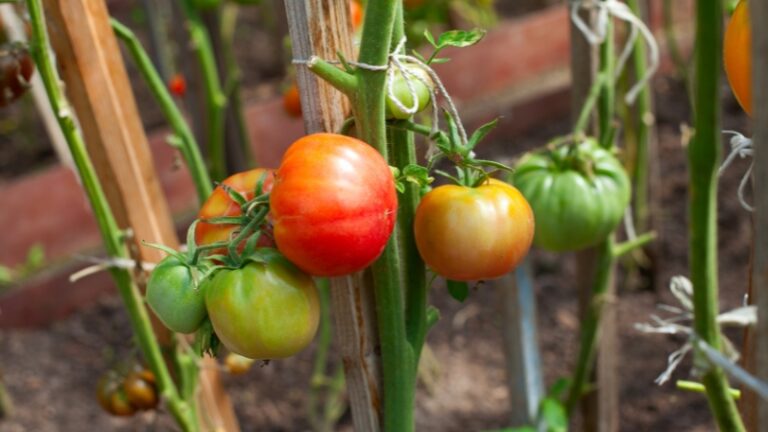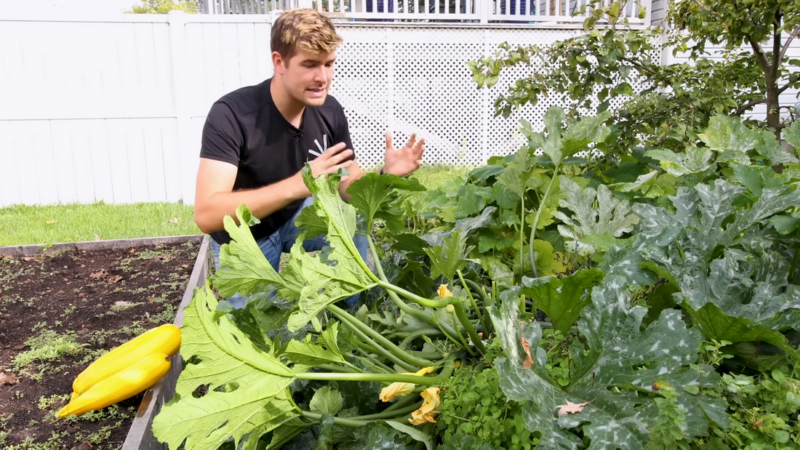Zucchini is a popular and relatively easy-to-grow vegetable, but growers often face issues that affect the quality of their crops.
One common problem is the growth of short and fat zucchini, which can be frustrating for those aiming for uniform, healthy produce.
Understanding the causes behind these deformations and applying proper growing techniques is key to a successful harvest.
The main problems are:
- Pollination Problems
- Watering Issues
- Blossom End Rot
- Excessive Nitrogen
- Poor Variety Selection
- Temperature Stress
- Pests and Diseases
Let us talk about them in greater detail.
Pollination Problems
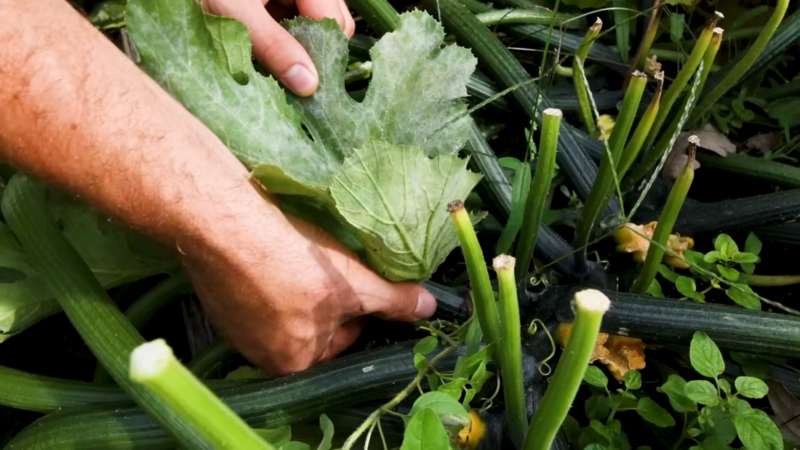
One of the primary causes of short, fat zucchinis is inadequate pollination.
Zucchinis rely heavily on bees and other pollinators to transfer pollen from male to female flowers, ensuring proper fruit development.
When pollination is insufficient, the zucchini may grow unevenly, resulting in stubby or swollen ends, particularly at the blossom side of the fruit.
Poor weather conditions, low pollinator populations, or a lack of pollinator-attracting plants in the garden can all contribute to this issue.
To combat inadequate pollination, gardeners can introduce flowering plants nearby to attract bees and other beneficial insects.
Plants like marigolds, lavender, and sunflowers serve as natural pollinator magnets, enhancing the chances of successful pollination.
For those with low pollinator activity in their area, hand-pollinating zucchinis with a small brush can also help.
The simple technique involves manually transferring pollen from the male flowers to the female ones. It ensures better fruit development and prevents the common short and fat zucchini problem.
Watering Issues
Inconsistent watering is another factor that can lead to uneven zucchini growth. Zucchinis require a steady supply of moisture to grow properly.
When watering patterns are erratic, with frequent periods of drought followed by overwatering, the fruit may respond by developing fat ends or becoming stunted.
Uneven growth can often be traced back to soil conditions that fluctuate between dry and waterlogged, which stresses the plants and affects fruit shape and size.
To prevent watering issues, it’s essential to provide regular, consistent moisture to zucchini plants. Drip irrigation systems or soaker hoses are particularly effective for delivering steady water to the root zone.
Mulching around the base of the plants with organic materials like straw or shredded leaves helps retain soil moisture, reducing evaporation and promoting a more stable growing environment.
By maintaining an even watering schedule and ensuring the soil stays consistently damp but not waterlogged, growers can minimize the risk of deformed zucchinis.
Blossom End Rot
Blossom end rot is a physiological disorder that affects many fruiting plants, including zucchini.
The condition, characterized by swollen or rotting ends, is typically caused by a calcium deficiency, which is often linked to inconsistent watering.
When plants don’t receive a steady supply of water, they struggle to absorb nutrients, including calcium, leading to issues in fruit development.
To prevent blossom end rot, gardeners should focus on maintaining consistent soil moisture, as uneven watering is the primary cause of calcium uptake problems.
Applying lime or dolomite to the soil can help correct calcium deficiencies before they cause fruit deformities.
Another effective strategy is to test the soil periodically to ensure nutrient levels are balanced. When these preventative measures are in place, zucchinis can grow uniformly, free from the unsightly effects of blossom end rot.
Excessive Nitrogen
While nitrogen is crucial for the healthy growth of plants, too much of it can lead to problems, especially in fruiting crops like zucchini.
Excessive nitrogen encourages lush foliage growth at the expense of fruit development, resulting in zucchini that may be deformed, short, or fat.
When the plant focuses more on leaf production, it doesn’t allocate enough energy to properly form fruit, leading to suboptimal results.
The solution to this issue lies in using a balanced fertilizer that provides a proper ratio of:
- Nitrogen
- Phosphorus
- Potassium
Overfertilization with nitrogen-heavy products should be avoided. Soil testing is an excellent way to determine whether your garden’s nutrient levels are appropriate for zucchini growth.
By applying a balanced fertilizer and limiting excess nitrogen, gardeners can prevent the issue of underdeveloped or misshapen zucchinis.
Poor Variety Selection
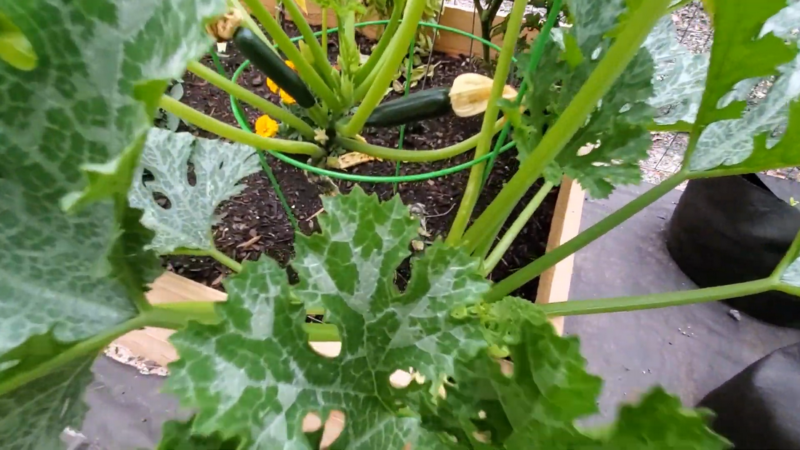
Not all zucchini varieties are created equal, and some may be more prone to growth issues like short and fat zucchini.
Varietal selection plays a critical role in the overall success of the crop.
Certain varieties are bred for specific climates or conditions and may not perform well in other settings, leading to deformed fruit.
To avoid this, it’s essential to choose varieties known for producing evenly shaped zucchinis.
Cultivars like ‘Tigress’ and ‘Burpee Golden Glory’ are reputable for their balanced growth and resistance to common problems like uneven fruit development.
By researching and selecting the right zucchini variety for your growing conditions, you can avoid unnecessary frustration and ensure a more successful harvest.
Temperature Stress
Zucchinis thrive in warm, stable temperatures, but sudden changes in weather can lead to malformed fruits.
Temperature stress, whether from cold snaps or excessive heat, can disrupt the plant’s ability to produce well-formed zucchinis.
When the temperature drops too low, growth slows, and the fruit may become short or fat due to irregular development.
Conversely, extreme heat can lead to stress, resulting in similar deformities.
To mitigate temperature stress, gardeners can use row covers or cloches to protect zucchini plants during cold spells.
In regions with hot summers, shading the plants during peak afternoon hours can prevent excessive heat stress.
Pests and Diseases
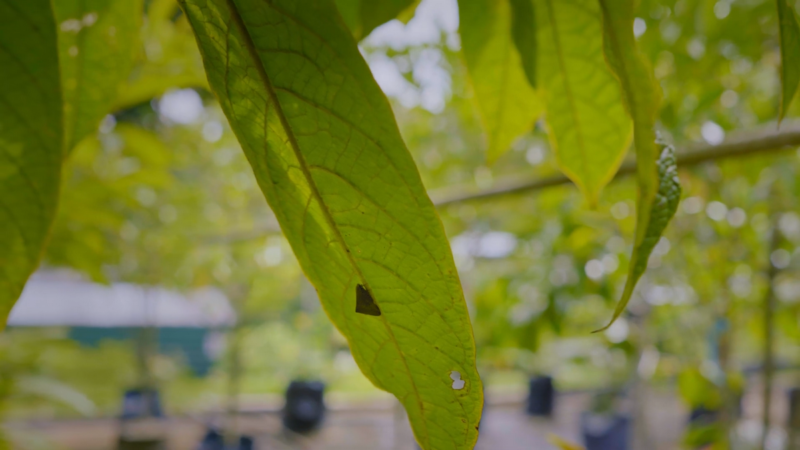
Pests like squash vine borers and aphids are notorious for causing stress to zucchini plants, leading to poor fruit development and deformities.
Squash vine borers, in particular, can wreak havoc on the plant’s vascular system, stunting growth and causing misshapen zucchinis.
Aphids, while smaller, can spread diseases and weaken plants by feeding on their sap, resulting in poor fruit quality.
To manage pests, regular monitoring is key. Inspecting plants for signs of infestation early can help prevent more significant damage.
Organic treatments like need oil or insecticidal soap can be used to control pests without harming beneficial insects like pollinators.
Installing physical barriers like row covers can also keep pests at bay.
The Bottom Line
To ensure healthy, well-formed zucchinis, consistent watering, proper pollination, balanced nutrients, and effective pest control are essential.
By observing and addressing potential problems early, gardeners can grow zucchinis that thrive and avoid the common issue of deformities.
Regular care and attention are key to a successful zucchini harvest.


